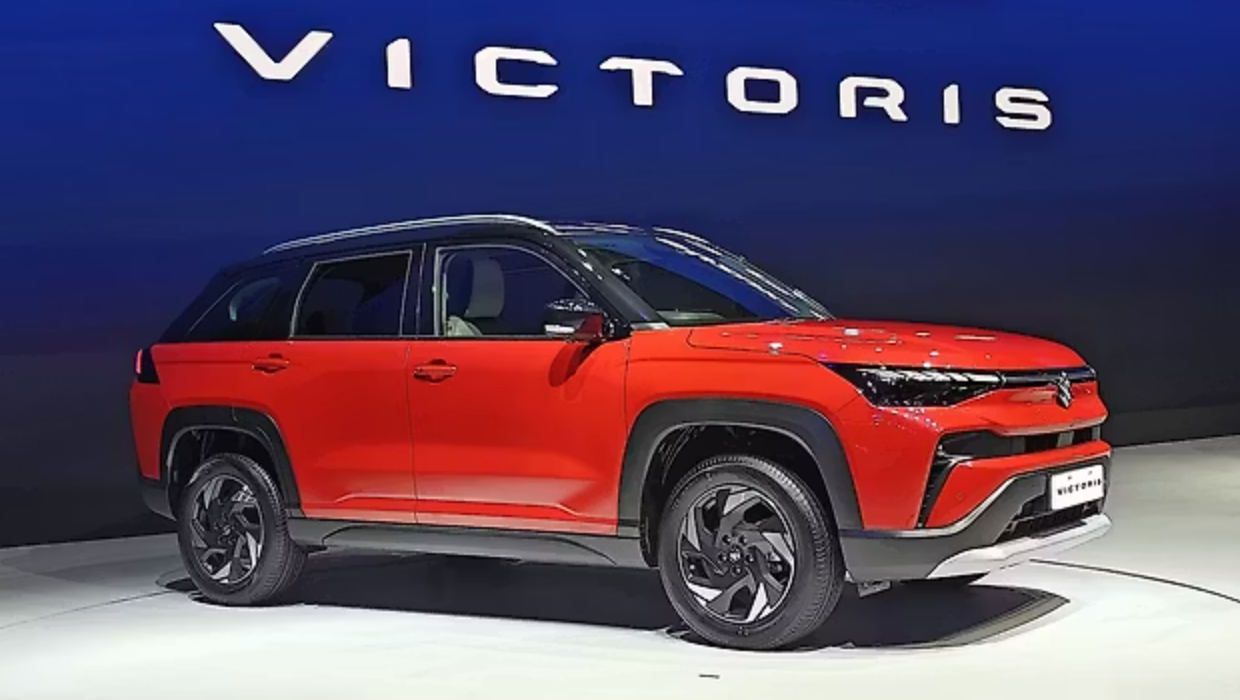A Sneak Peek Inside: the Citroen Basalt Cabin
Citroen’s highly anticipated SUV coupe, the Basalt, is inching closer to its official debut in August 2024. To pique the interest of potential buyers, Citroen India has released a teaser offering a glimpse into the Basalt’s interior. This article delves deeper into what we can expect from Citroen Basalt’s cabin, exploring its design elements, comfort features, and potential technology inclusions.

First Look: A Cabin Focused on Comfort and Style
The teaser provides a tantalizing glimpse of the Basalt’s cabin, focusing on comfort and a sophisticated aesthetic. The beige color scheme creates a light and airy feel while using soft-touch materials that promise a premium ambiance.
The layout appears similar to what we’ve seen in the Citroen C3 and C3 Aircross, suggesting a familiar and user-friendly environment for Citroen enthusiasts. Both the front and rear seats boast adjustable headrests, ensuring optimal comfort for passengers of all heights.
Borrowing Strengths: Potential Features and Technology
While Citroen hasn’t divulged all the details regarding the Basalt’s interior, we can expect it to borrow some features from its successful sibling, the C3 Aircross. This could include a 7-inch digital driver’s display, replacing the traditional analog instrument cluster and providing crucial driving information at a glance.
Modern conveniences are likely to be present as well. Features like cruise control, automatic climate control, and a wireless phone charger would enhance the driving experience for both the driver and passengers. Additionally, push-button start/stop functionality and keyless entry could be included, offering a touch of convenience and sophistication.
Safety remains a top priority for Citroen. The Basalt is expected to come equipped with a suite of safety features, potentially including six airbags, electronic stability control (ESC) for improved vehicle handling in challenging conditions, a rear parking camera for effortless maneuvering in tight spaces, and tire pressure monitoring system (TPMS) to keep you informed about tire inflation levels.
Tech on Display: A Look at the Infotainment System
The teaser offers a glimpse of the dashboard, revealing a design similar to the C3 hatchback and C3 Aircross SUV. This suggests the Basalt might adopt a floating-style infotainment system, potentially the same 10.2-inch touchscreen unit found in other Citroen offerings in India.
This infotainment system would likely provide access to a variety of features, including navigation, smartphone connectivity via Apple CarPlay and Android Auto, a music streaming service, and a rear-seat entertainment system (if available). The exact functionalities will depend on the specific variant and trim level chosen.
Powertrain Speculations: A Familiar Engine Option
Under the hood, the Basalt is expected to borrow the proven 1.2-litre turbocharged petrol engine from the C3 Aircross and C3 hatchback. This engine is capable of producing 110 PS of power and up to 205 Nm of torque, offering a balance of performance and fuel efficiency.
Transmission options are likely to mirror those of its siblings, with a 6-speed manual transmission and a 6-speed torque converter automatic transmission potentially available. This will cater to a wider range of driver preferences, allowing buyers to choose the option that best suits their driving style and needs.
Expected Price and Competition: Where Does the Basalt Fit In?
Citroen is expected to launch the Basalt shortly after its August debut, with a starting price potentially beginning around Rs 10 lakh (ex-showroom). This positions it as a more premium offering compared to the standard Citroen C3.
In terms of competition, the Basalt will primarily rival the recently launched Tata Curvv, another SUV-coupe vying for a slice of the Indian market. It will also serve as a stylish alternative to established compact SUVs like the Hyundai Creta, Kia Seltos, Maruti Grand Vitara, Volkswagen Taigun, Toyota Hyryder, Skoda Kushaq, MG Astor, and its own Citroen C3 Aircross.
The Basalt’s unique blend of SUV practicality, coupe-like aesthetics, and potentially feature-rich interior could make it a compelling option for buyers seeking a vehicle that stands out from the crowd.
FAQs
Q: What is the expected launch date of the Citroen Basalt?
A: The Citroen Basalt is expected to debut in August 2024, with its launch likely following shortly after.
Q: What engine options will be available for the Citroen Basalt?
A: The Citroen Basalt is expected to be powered by a 1.2-litre turbo-petrol engine producing 110 PS and up to 205 Nm, with both 6-speed manual and 6-speed automatic transmission options.
Q: What are some of the key interior features of the Citroen Basalt?
A: The Citroen Basalt is expected to feature a 10.2-inch touchscreen infotainment system, a 7-inch digital driver’s display, a wireless phone charger, cruise control, automatic climate control, and push-button start/stop functionality.
Q: What safety features can we expect in the Citroen Basalt?
A: The Citroen Basalt is likely to come equipped with six airbags, electronic stability control (ESC), a rear parking camera, and a tire pressure monitoring system (TPMS).
Q: What will be the expected price range of the Citroen Basalt?
A: The Citroen Basalt is expected to be priced starting around Rs 10 lakh (ex-showroom).
Q: Who are the main competitors of the Citroen Basalt?
A: The main competitors of the Citroen Basalt will include the Tata Curvv, Hyundai Creta, Kia Seltos, Maruti Grand Vitara, Volkswagen Taigun, Toyota Hyryder, Skoda Kushaq, MG Astor, Citroen C3 Aircross, and Honda Elevate.




